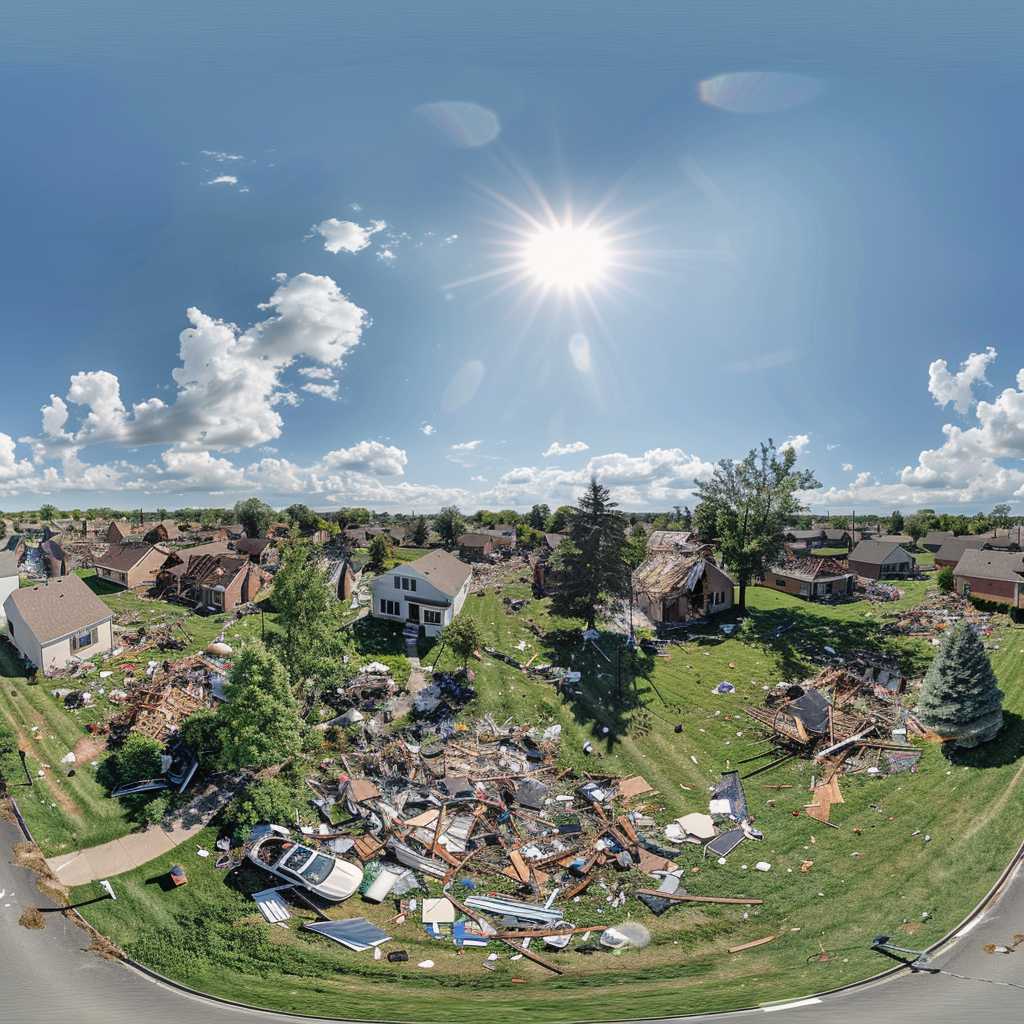## Understanding the Ohio Tornado Phenomenon: Patterns, Precautions, and Recovery
Ohio, located in the United States’ Midwest, experiences a varied climate with the potential for severe weather events, including tornadoes. This article delves into the tornado patterns in Ohio, the precautions residents can take, and how communities recover from such devastating incidents.
Tornado Patterns in Ohio: Frequency and Severity
Tornadoes are violently rotating columns of air that are in contact with both the surface of the Earth and a cumulonimbus cloud or, in rare cases, the base of a cumulus cloud. They are often preceded by severe thunderstorms and can cause substantial damage to structures, landscapes, and can lead to loss of life.
In Ohio, tornadoes are more common during the spring and early summer months when warm, moist air from the Gulf of Mexico moves north and meets cooler, drier air coming from Canada. This collision of air masses creates an unstable atmosphere conducive to thunderstorms and tornadoes. The state is not located in “Tornado Alley” – a region typically associated with frequent tornadoes in the central United States – but it still experiences a significant number of tornadoes annually.
Ohio’s tornadoes vary greatly concerning their size, duration, and impact. They are rated using the Enhanced Fujita (EF) scale which ranges from EF0, indicating light damage, to EF5 with incredible devastation. While Ohio has recorded EF3 and EF4 tornadoes that have caused significant destruction, it experiences an EF5 infrequently.
Precautions for Ohio Residents
When it comes to preparing for tornadoes, Ohioans are recommended to stay updated with weather forecasts via local news outlets or smartphone apps designed for emergency weather alerts. The State provides guidelines and suggests having a disaster plan that includes:
– Identifying a safe room or basement of a sturdy building as shelter
– Having an emergency kit ready with food, water, medication, a flashlight, and a whistle
– Knowing how to shut off utilities like gas and electricity to prevent fires after a tornado
– Practicing tornado drills regularly
Local governments in Ohio also practice readiness by testing their emergency alert systems frequently during peak tornado seasons.
The Aftermath: Community Recovery Efforts
After a tornado passes, the recovery period can be long and challenging. It involves immediate response activities such as search and rescue operations followed by longer-term rebuilding efforts.
Non-governmental organizations (NGOs), faith-based groups, and community organizations often play vital roles in both immediate relief efforts like setting up temporary housing and providing meals, as well as in the lengthy rebuilding stage which can involve construction projects and psychological support for affected individuals.
Federal assistance is frequently provided through agencies such as FEMA (the Federal Emergency Management Agency) which can provide financial support for both individual households and larger community reconstruction plans.
Additionally, lessons learned from each incident contribute to improving building codes to resist high winds in certain areas and refining evacuation plans.
Notes
*Image description: A panoramic view showing the aftermath of a typical Ohio tornado with houses missing roofs and debris scattered across lawns.*

